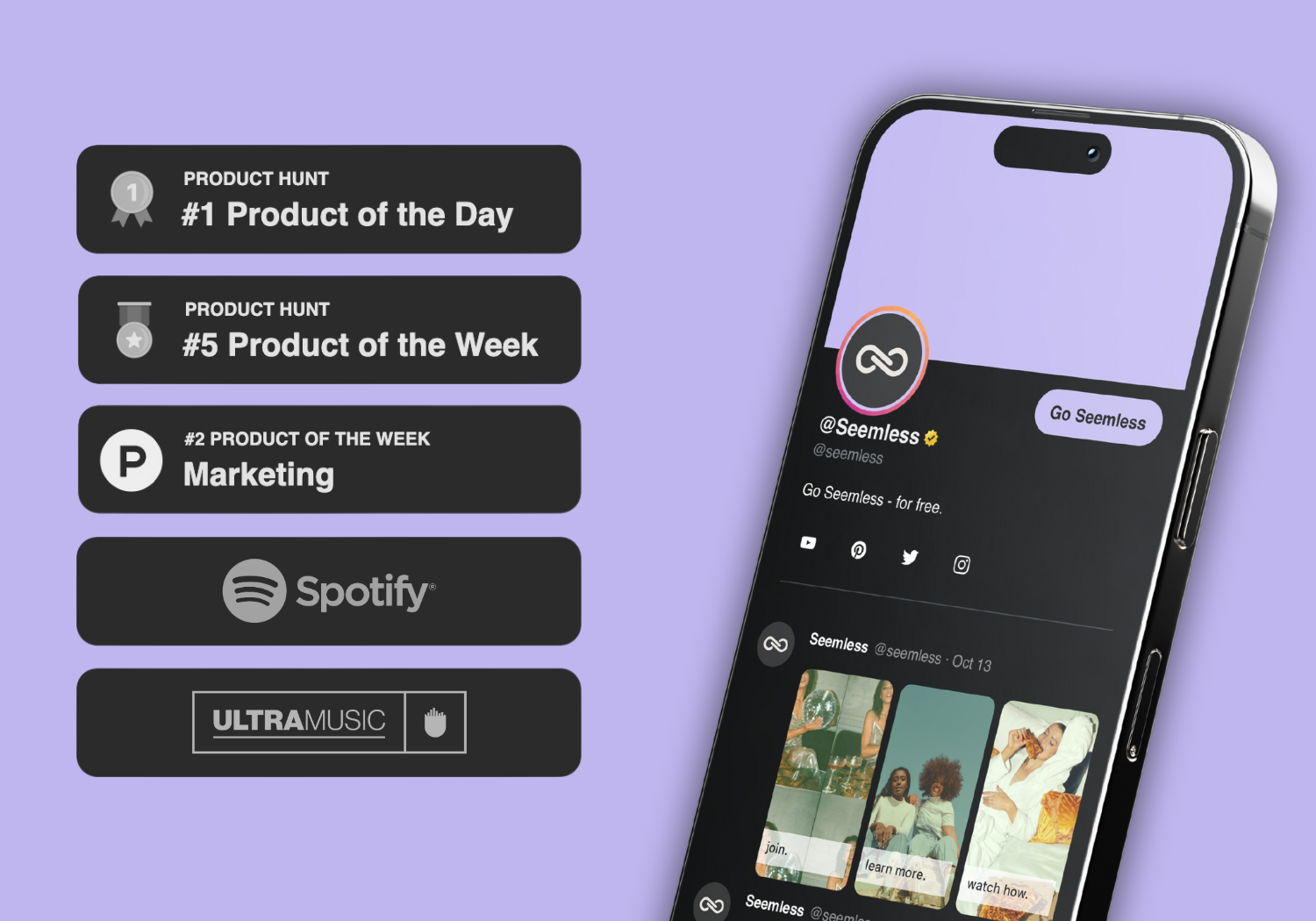When sharing multiple links on social media platforms, users often face restrictions. Many platforms limit the number of links allowed in a single post. Instagram, for instance, permits only one clickable link in a user’s bio.
This constraint can be challenging for individuals and businesses aiming to share links to various content or products. Another issue is the difficulty in tracking individual link performance. Without the ability to monitor clicks and engagement for each link separately, users struggle to determine which content resonates most with their audience and generates the most traffic.
Furthermore, including multiple links in one post can create a cluttered appearance and hinder followers’ navigation to desired content. To address these challenges, many users employ link in bio tools. These solutions enable sharing multiple links in a single location and tracking each link’s performance.
Such tools provide a centralized hub for important links, simplifying content access for the audience. They often include analytics features, offering insights into which links generate the most engagement and clicks.
Key Takeaways
- Sharing multiple links on social media platforms can be limited due to platform restrictions and user experience challenges.
- Link in bio tools offer the benefit of consolidating multiple links into one easily accessible location for your audience.
- When choosing a link in bio tool, consider factors such as customization options, analytics, and integration with other platforms.
- To effectively organize and present multiple links in one post, consider using a visually appealing layout and prioritizing the most important links.
- Maximize engagement and click-through rates by using link in bio tools to track performance and optimize your links based on data.
- Create compelling calls to action by using clear and concise language, and by offering value to your audience with each link.
- Track and analyze the performance of your multiple links using the analytics provided by your chosen link in bio tool, and adjust your strategy accordingly.
Exploring the benefits of using link in bio tools
Centralized Link Management
One of the primary benefits is the ability to consolidate all of your important links into one centralized location. This makes it easier for your audience to access the content or products they are interested in, without having to navigate through multiple posts or pages.
Data-Driven Insights
Additionally, link in bio tools often provide analytics and insights that can help you understand the performance of each individual link. This data can be invaluable for understanding which content is resonating with your audience and driving the most traffic. By having this information at your fingertips, you can make informed decisions about your content strategy and optimize your links for maximum engagement.
Customization and Branding
Another benefit of using link in bio tools is the ability to customize the appearance of your links and create a more visually appealing experience for your audience. Many tools offer features such as custom branding, color schemes, and layout options that allow you to create a cohesive and professional look for your links. This can help you stand out from the competition and make a lasting impression on your followers.
Choosing the right link in bio tool for your needs

When it comes to choosing a link in bio tool, there are several factors to consider to ensure that you select the right tool for your specific needs. One of the first things to consider is the features and functionality offered by the tool. Look for a tool that allows you to customize the appearance of your links, track performance metrics, and easily add and remove links as needed.
Additionally, consider whether the tool integrates with your existing social media platforms and marketing tools, as seamless integration can save you time and effort. Another important factor to consider is the pricing and subscription model of the link in bio tool. Some tools offer a free basic version with limited features, while others require a monthly or annual subscription for access to premium features.
Consider your budget and the specific features you need to determine which pricing model makes the most sense for your business. It’s also important to consider the level of customer support and resources offered by the link in bio tool. Look for a tool that provides comprehensive customer support, including tutorials, FAQs, and responsive customer service representatives who can assist you with any issues or questions that arise.
How to effectively organize and present multiple links in one post
Organizing and presenting multiple links in one post requires careful planning and consideration to ensure that your audience can easily navigate to the content they are interested in. One effective strategy is to categorize your links based on their content or purpose. For example, if you are a fashion influencer, you might categorize your links into sections such as “Shop My Outfits,” “Beauty Favorites,” and “Collaborations.” This makes it easier for your audience to find the specific content or products they are looking for.
Another effective way to organize multiple links is to prioritize them based on their importance or relevance. Consider which links are driving the most traffic or engagement, and feature those prominently at the top of your link in bio tool. This ensures that your audience sees the most important content first and encourages them to click through to learn more.
When presenting multiple links in one post, it’s important to create a visually appealing and easy-to-navigate experience for your audience. Use clear and concise language to describe each link, and consider using custom branding and color schemes to create a cohesive look for your links. Additionally, consider using eye-catching graphics or images to draw attention to specific links and make them stand out from the rest.
Maximizing engagement and click-through rates with link in bio tools
Maximizing engagement and click-through rates with link in bio tools requires a strategic approach to content creation and presentation. One effective strategy is to regularly update and refresh your links with new and relevant content. By keeping your links up-to-date with fresh content, you can encourage repeat visits from your audience and keep them engaged with your brand.
Another effective way to maximize engagement is to create compelling calls to action that encourage your audience to click through to your links. Use persuasive language and incentives to entice your followers to explore your content or products further. For example, you might use phrases like “Shop Now,” “Learn More,” or “Exclusive Offer” to encourage clicks.
Additionally, consider leveraging other marketing channels such as email newsletters, social media posts, and paid advertising to drive traffic to your link in bio tool. By promoting your links across multiple channels, you can reach a wider audience and increase the likelihood of engagement and click-throughs.
Best practices for creating compelling calls to action with multiple links

Tailoring Calls to Action to Your Audience
Creating compelling calls to action with multiple links requires careful consideration of your audience’s needs and interests. One best practice is to tailor your calls to action to each specific link and its intended audience. For example, if you are promoting a new product, you might use a call to action that emphasizes the unique features or benefits of the product and encourages followers to learn more or make a purchase.
Creating a Sense of Urgency
Another best practice is to create a sense of urgency or exclusivity with your calls to action. Use phrases like “Limited Time Offer,” “Exclusive Access,” or “Act Now” to create a sense of urgency that motivates your audience to take action quickly.
Testing and Optimizing Calls to Action
It’s also important to test different calls to action and track their performance over time. By experimenting with different language, incentives, and placement of calls to action, you can gain valuable insights into what resonates with your audience and drives the most engagement.
Tracking and analyzing the performance of your multiple links in one post
Tracking and analyzing the performance of your multiple links in one post is essential for understanding which content is resonating with your audience and driving the most traffic. Most link in bio tools offer built-in analytics and insights that allow you to track metrics such as clicks, engagement, and conversion rates for each individual link. One effective way to track performance is to regularly review your analytics data and look for trends or patterns in engagement.
For example, you might notice that certain types of content or products consistently drive higher click-through rates, while others underperform. Use this information to inform your content strategy and optimize your links for maximum engagement. Additionally, consider using UTM parameters or other tracking codes in your links to gain more detailed insights into where your traffic is coming from and how users are interacting with your content.
By understanding which channels are driving the most traffic and which links are performing best, you can make informed decisions about where to focus your marketing efforts. In conclusion, sharing multiple links on social media platforms can be challenging due to limitations on the number of clickable links allowed in a single post. However, by using link in bio tools, individuals and businesses can overcome these limitations and enjoy a wide range of benefits such as consolidated link management, analytics insights, customization options, and more visually appealing presentation of their links.
When choosing a link in bio tool, it’s important to consider factors such as features, pricing, customer support, and integration capabilities. Effectively organizing and presenting multiple links requires careful planning, categorization, prioritization, and visual appeal. Maximizing engagement and click-through rates involves regularly updating content, creating compelling calls to action, leveraging other marketing channels, tailoring calls to action, creating urgency or exclusivity, testing different approaches, tracking performance metrics, analyzing data trends, using tracking codes, and making informed decisions based on insights gained from analytics data.

